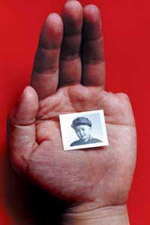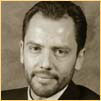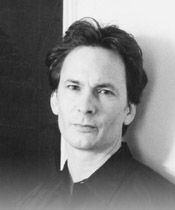Arresting images

|
“Omigod!” gasped the young woman in the U of C sweatshirt as she caught sight of Feng Feng’s Shin Brace (1999–2000). The Gulliver-sized bodyscape—a metal apparatus drilled into the leg of a Chinese workman, who wore it for 18 months—fills an entire wall of the Smart Museum, where Between Past and Future: New Photography and Video from China had its opening reception Thursday night.
Feng Feng’s photograph is not the only larger-than-life aspect of the new exhibition, presented jointly at the Smart and the Museum of Contemporary Art Chicago (MCA). Curators Wu Hung, the Harrie H. Vanderstappen distinguished service professor of art history, and Christopher Phillips, curator at the International Center of Photography in New York, have divided the 130 works by 60 artists into four themes: “History and Memory” and “Reimagining the Body” at the Smart, and “People and Place” and “Performing the Self” at the MCA. The October 2–January 16 exhibition includes a range of special events, kicking off a two-day scholarly symposium this weekend.
Many of the photographs and videos have never been seen in the U.S.—and rarely in mainland China. Indeed, as he led reception-goers, who’d earlier munched veggie wraps, cashews, and Moroccan-style chicken, on a tour of the 13 artists represented in “Reimagining the Body,” Wu Hung, dapper in shades of browns and black, confessed, “I sometimes feel a bit uneasy to see these works in this environment because I first saw them in a Shanghai warehouse,” exhibited in unofficial shows, “underground.”
M.R.Y.
Photo: Sheng Qi’s “Memories Me” (2000) is a photograph of the artist’s hand—minus the finger he cut off and buried when he left his homeland.





















